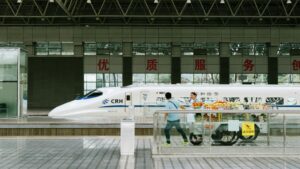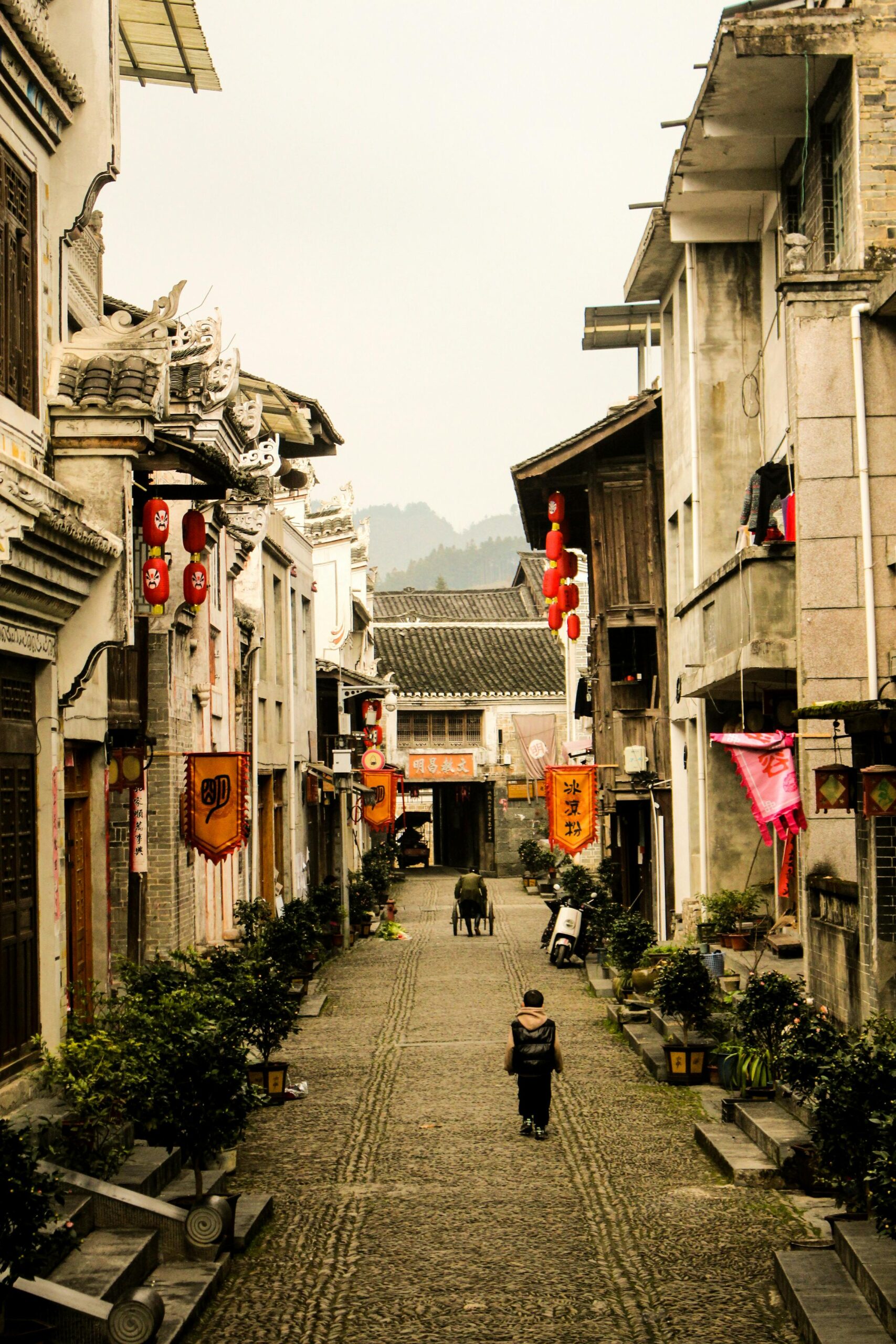China
China, a land where the ancient and the modern dance in an eternal embrace, is a country of endless fascination and profound mystery. It is a place where time seems to stretch and bend, where the past whispers through the winds that sweep across the Great Wall, and the future pulses with the vibrant energy of its cities. China is not just a nation; it is a living tapestry woven from millennia of history, culture, and the indomitable spirit of its people.
The Echoes of History
China’s history is an epic tale written on the scrolls of time, each dynasty a brushstroke that has shaped the vast canvas of this nation. The earth here has borne witness to the rise and fall of empires, the forging of unity from chaos, and the relentless march of progress. From the ancient myths of the Yellow Emperor to the grandeur of the Tang Dynasty, from the silent warriors of the Terracotta Army to the revolutionary fervor of the 20th century, China’s past is a river that flows endlessly into the present.
The Great Wall, a serpent of stone that winds across mountains and deserts, stands as a testament to the strength and determination of a people who have faced countless challenges and emerged victorious. The Forbidden City in Beijing, with its golden roofs and sacred halls, whispers stories of emperors and eunuchs, of power and intrigue, of a world both distant and near.
Yet, history in China is not confined to the pages of dusty tomes or the ruins of ancient palaces. It lives in the traditions that are passed down from generation to generation, in the festivals that light up the darkest nights, in the tea ceremonies that bring calm to the soul. The past is a living presence, a guiding hand that shapes the destiny of this nation.
The Heartbeat of Culture
To speak of China is to speak of a culture as vast and varied as the land itself. It is the melody of the guqin, the elegance of a calligraphy brush as it dances across silk, the vibrant hues of a Peking opera mask. It is the taste of dumplings on a cold winter’s day, the warmth of a shared hotpot meal, the scent of jasmine tea rising from a delicate porcelain cup.
Chinese culture is a mosaic, each piece a different shade, a different texture. It is the wisdom of Confucius, the mysticism of Taoism, the compassion of Buddhism. It is the poetry of Li Bai, whose verses have floated through the ages like autumn leaves on a river, carrying with them the melancholy and joy of life.
The spirit of China is found in the bustling streets of Shanghai, where neon lights reflect off the skyscrapers and the future feels within reach. It is in the tranquil gardens of Suzhou, where time slows and the beauty of nature is captured in the delicate balance of rock, water, and plant. It is in the rolling hills of Guizhou, where ethnic minorities preserve their ancient customs, their songs and dances a vibrant thread in the fabric of Chinese identity.
The Majesty of the Land
China is a land of breathtaking contrasts, where the landscapes are as diverse as the people who inhabit them. From the towering peaks of the Himalayas to the golden sands of the Gobi Desert, from the fertile plains of the Yangtze River to the karst mountains of Guilin, this is a country where nature reveals itself in all its splendor.
The Yangtze and the Yellow Rivers are the lifeblood of China, their waters nurturing the land and the people for thousands of years. They flow through a country where tradition and modernity meet, where ancient rice terraces rise in perfect harmony with the earth, and mega-cities soar into the sky, symbols of a future that is being forged with every passing moment.
In the northeast, the Harbin Ice Festival transforms the winter landscape into a glittering wonderland of ice sculptures, each one more intricate than the last, a celebration of human creativity against the backdrop of nature’s harshest elements. In the south, the rice terraces of Longsheng cascade down mountainsides like the steps of a giant, an awe-inspiring testament to the ingenuity of those who have shaped the land for centuries.
The Pulse of Modernity
China today is a nation on the move, its pulse quickening with the rhythm of progress and innovation. Cities like Beijing, Shenzhen, and Guangzhou are the beating heart of a country that is rapidly transforming, where ancient hutongs give way to gleaming skyscrapers, and the hum of electric vehicles fills the air. The energy is palpable, a sense that anything is possible, that the future is being written in the here and now.
Yet, even as China looks forward, it does not forget its roots. In the midst of this relentless progress, there is a deep respect for the traditions that have carried this nation through countless trials. It is a delicate balance, a dance between the old and the new, between the wisdom of the ancestors and the dreams of the young.
The Spirit of the People
Above all, China is defined by its people—a billion souls who together form the heart and soul of this vast nation. They are the farmers who tend the fields in the shadow of ancient mountains, the engineers who build bridges that span mighty rivers, the artists who capture the beauty of the world in a single brushstroke. They are the young and the old, the urban and the rural, each one a thread in the tapestry of China.
There is a quiet strength in the Chinese people, a resilience that has been forged through centuries of hardship and triumph. It is a spirit that looks to the future with hope and determination, a belief that no challenge is too great, no dream too distant.
In the bustling markets of Xi’an, where the aroma of street food mingles with the chatter of merchants, in the tranquil temples of Hangzhou, where the scent of incense rises with the prayers of the faithful, in the remote villages of Yunnan, where life moves at a different pace, the spirit of China endures, vibrant and unyielding.
China is not just a country; it is a story—a story of endless chapters, of countless lives, of dreams and aspirations that stretch across the horizon like the Great Wall itself. It is a land where the past and the future meet, where tradition and innovation walk hand in hand, where the heart beats with the rhythm of a thousand years.
This is China—a place of infinite wonder, where the journey is as boundless as the sky, and the soul of a nation shines as brightly as the morning sun.
Posts
FAQ

Travelers often seek out iconic destinations like the Great Wall, the Forbidden City in Beijing, and the Terracotta Army in Xi’an. However, many are also drawn to natural wonders such as Zhangjiajie’s stunning landscapes and the picturesque Li River in Guilin. This mix of historical sites and breathtaking scenery offers a well-rounded experience of China’s rich cultural heritage and diverse natural beauty.

China’s economic transformation is a topic of great interest globally. People often inquire about the key factors behind this growth, such as government policies, technological advancements, and the role of global trade. Understanding China’s economic rise provides insights into its influence on global markets, international relations, and the future of global trade.
Curiosity about everyday life in China leads people to ask about topics like education, work culture, family life, and the social norms that shape Chinese society. Comparing these aspects with life in Western countries helps people gain a deeper understanding of cultural differences and similarities, fostering greater cross-cultural appreciation.

When greeting someone, a simple nod or slight bow is polite; handshakes are also common, though often lighter than in the West. In social settings, it’s customary to offer and receive items, such as gifts or business cards, with both hands. At the dining table, avoid sticking chopsticks upright in a bowl of rice, as this resembles a funeral rite.
Additionally, it’s considered impolite to discuss politics or sensitive topics in casual conversation. Familiarizing yourself with these customs will help you navigate social interactions smoothly

China’s transportation system is vast and efficient, but it can be overwhelming for first-time visitors. Major cities like Beijing, Shanghai, and Guangzhou have extensive subway systems that are easy to use and often have English signage. High-speed trains are a popular and convenient way to travel between cities; booking tickets in advance is recommended, especially during holidays. Taxis are widely available, but it’s helpful to have your destination written in Chinese to show the driver. For added convenience, download apps like DiDi (China’s version of Uber) or Baidu Maps, which can assist with navigation and transportation in English.


